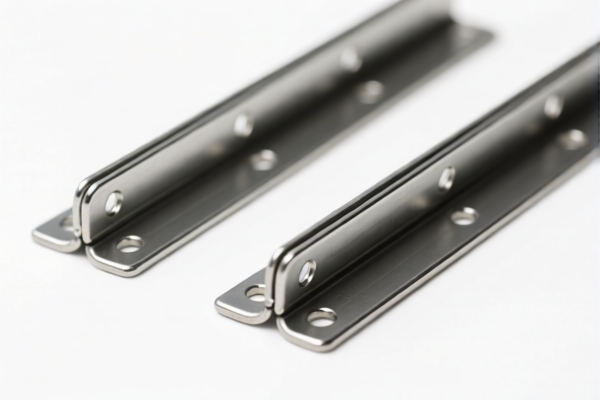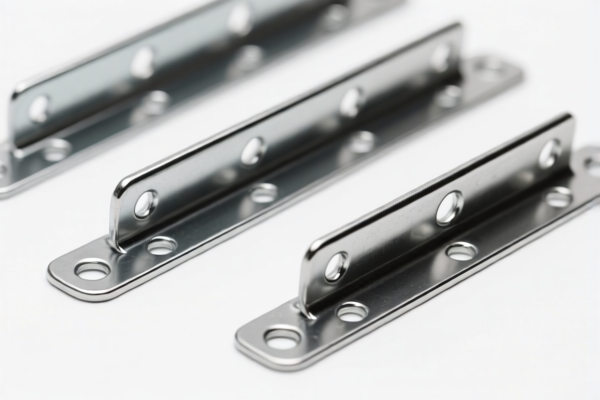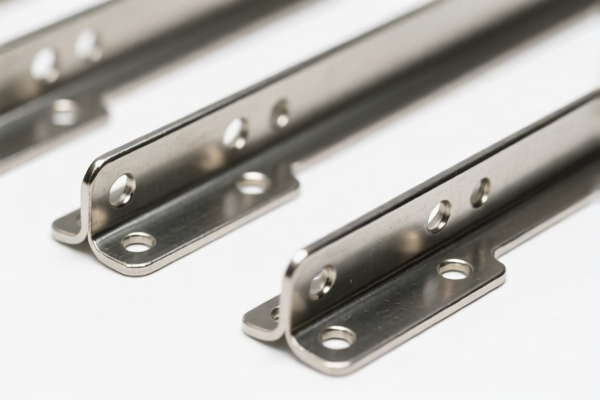| HS Code | Official Doc | Tariff Rate | Origin | Destination | Effective Date |
|---|---|---|---|---|---|
| 7415390000 | Doc | 58.0% | CN | US | 2025-05-12 |
| 7415290000 | Doc | 58.0% | CN | US | 2025-05-12 |
| 8305100010 | Doc | 40.4% | CN | US | 2025-05-12 |
| 8305100050 | Doc | 65.4% | CN | US | 2025-05-12 |
| 8308909000 | Doc | 57.7% | CN | US | 2025-05-12 |
| 8301500000 | Doc | 40.6% | CN | US | 2025-05-12 |
| 7308903000 | Doc | 80.0% | CN | US | 2025-05-12 |
| 7308906000 | Doc | 80.0% | CN | US | 2025-05-12 |
| 9406900130 | Doc | 82.9% | CN | US | 2025-05-12 |
| 9406900190 | Doc | 82.9% | CN | US | 2025-05-12 |
| 8304000000 | Doc | 33.9% | CN | US | 2025-05-12 |
| 9403999045 | Doc | 80.0% | CN | US | 2025-05-12 |




Corner Brackets
Corner brackets, also known as angle brackets, are punctuation marks with the form ⟨ ⟩ or < >. They serve a variety of purposes across different fields, including mathematics, computer science, linguistics, and writing.
Material
Corner brackets are not physical materials themselves, but symbols represented in various mediums:
- Typography: Typically rendered as part of a font set.
- Digital Text: Represented as characters within a character encoding standard (e.g., Unicode).
- Handwriting: Drawn as angular symbols.
Purpose and Function
The function of corner brackets depends heavily on the context:
- Mathematics: Used to denote inner products, linear algebra operations (e.g., vector spaces), and sometimes to indicate intervals.
<a, b>might represent the inner product of vectors a and b. - Computer Science:
- HTML/XML: Used as delimiters for tags, defining elements and attributes.
<p>This is a paragraph.</p> - Programming Languages: Used in various contexts, including generics (e.g.,
List<String>), templates, and type annotations. - Data Structures: Used to represent relationships or pointers.
- HTML/XML: Used as delimiters for tags, defining elements and attributes.
- Linguistics: Used in the International Phonetic Alphabet (IPA) to denote phonetic transcriptions.
/ˈhɛloʊ/represents the pronunciation of "hello". - Writing/Grammar: Less common in standard prose, but sometimes used to enclose stage directions in scripts, or for specific stylistic effects.
- Physics: Used in Dirac notation (bra-ket notation) to represent quantum states.
<ψ|represents a bra vector.
Usage Scenarios
- Writing Code: Defining HTML elements, declaring variables in programming languages.
- Mathematical Notation: Expressing vector operations, defining sets and intervals.
- Phonetic Transcription: Representing the sounds of speech.
- Scriptwriting: Indicating character actions or settings.
- Scientific Papers: Presenting quantum mechanical calculations.
- Data Exchange Formats: Defining elements in XML or JSON.
Common Types/Variations
- Angle Brackets (< >): The most common form, used extensively in HTML, XML, and general programming.
- Single Angle Brackets (< or >): Sometimes used alone, particularly in mathematical inequalities (e.g.,
x > 5). - Double Angle Brackets (≪ ≫): Used in mathematics to represent very much greater than or less than.
- Floor and Ceiling Brackets (⌊ ⌋, ⌈ ⌉): Used in mathematics to denote the floor and ceiling functions.
- Bra-Ket Notation (< | >): Specific to quantum mechanics, representing vectors and their duals.
- Chevrons (⟨ ⟩): Often used interchangeably with angle brackets, especially in mathematical contexts.
Corner brackets are metal fixtures used to connect materials at angles, providing support and reinforcement. They find applications in construction, furniture assembly, and various DIY projects.
The following HS codes from the provided reference material may be relevant:
- 7308903000: Structures (excluding prefabricated buildings of heading 9406) and parts of structures (for example, bridges and bridge sections, lock gates, towers, lattice masts, roofs, roofing frameworks, doors and windows and their frames and thresholds for doors, shutters, balustrades, pillars and columns) of iron or steel; plates, rods, angles, shapes, sections, tubes and the like, prepared for use in structures, of iron or steel: Other: Columns, pillars, posts, beams, girders and similar structural units: Not in part of alloy steel.
- 73: Iron or steel articles.
- 08: Structures and parts of structures.
- 90: Other. This subheading covers various structural components not specifically classified elsewhere.
- 7308906000: Structures (excluding prefabricated buildings of heading 9406) and parts of structures (for example, bridges and bridge sections, lock gates, towers, lattice masts, roofs, roofing frameworks, doors and windows and their frames and thresholds for doors, shutters, balustrades, pillars and columns) of iron or steel; plates, rods, angles, shapes, sections, tubes and the like, prepared for use in structures, of iron or steel: Other: Columns, pillars, posts, beams, girders and similar structural units: Other.
- 73: Iron or steel articles.
- 08: Structures and parts of structures.
- 90: Other. This subheading also covers various structural components not specifically classified elsewhere.
- 9403999045: Other furniture and parts thereof: Parts: Other: Other: Other Of metal: Other.
- 94: Furniture; bedding, mattresses, support, stuffing and similar items; lamps, lighting fittings, electric and non-electric; signboards, nameplates and similar items; prefabricated buildings.
- 03: Other furniture and parts thereof.
- 99: Parts.
- 90: Other. This subheading covers various furniture parts not specifically classified elsewhere.
Regarding HS code 7308903000 and 7308906000, please note the reference material indicates a total tax rate of 80.0% and mentions a 25% additional tariff on steel and aluminum products.
Customer Reviews
No reviews yet.